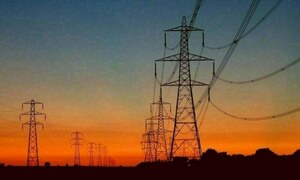Soya harvesting machines are getting stuck in the mud as they try to move over water-logged fields in Argentina, threatening the country's main cash crop as the government tries to stabilize its volatile peso currency and meet its new deficit target. The soya crop had already been hurt by a drought that ended last month, only to give way to near-constant rain storms that have turned once bone-dry fields into unharvestable mush.
The excessive wetness could cut soya yields by 5 percent to 15 percent, on top of the huge losses caused by hot, dry conditions that started in November and lasted through March. In some areas, water-logged bean pods burst open or sprout before being harvested, hurting quality and lowering prices by up to 30 percent, according to the Rosario grains exchange.
"What's most worrying is that the forecasts point to more strong rains over the days ahead," said the exchange's head of research, Emilce Terre. The double hammer blow of drought followed by excessive rain comes as the government tries to calm its volatile financial markets in part by cutting its fiscal deficit target to 2.7 percent of gross domestic product. To hit that target it needs revenue from the 27.5 percent tax it imposes on soyabean exports.
A smaller crop means less tax revenue for a country's whose economy is already in trouble. The government and the International Monetary Fund said on Tuesday they are working on a financing deal aimed at bolstering confidence. The harvesting combines that bring in the crop are meanwhile getting bogged down, said Gustavo Lopez, head of local farm consultancy Agritrend.
"People are talking about a soya crop of 37 or 38 million tonnes nationwide, and that the rains could reduce that by 1 to 1.5 million tonnes," Lopez said. Argentina's 2017/18 soya crop is projected at 40 million tonnes by the US Department of Agriculture. That is down from the 57 million tonne estimate the USDA gave before the start of a five-month drought in November.
The USDA also chopped its 2017/18 Argentina corn harvest estimate to 33 million tonnes from 42 million in November. "The current rains, added to previous ones and accumulated days with high humidity, are impacting on the quality of the soyabean harvest and compromising its production," said Esteban Copati, head analyst at the Buenos Aires Grains Exchange.
Corn harvesting has been halted in some areas. "Because of weather conditions, they have stopped harvesting late-seeded corn in most areas," said Alberto Morelli, president of Argentina's Maizar corn industry chamber. Analysts agreed the unusually strong rain has set the stage for a profitable wheat planting season, which starts this month.
"The rain has increased possibilities of having another good year in acreage, possibly well above 6 million hectares," said David Hughes, a farmer in the bread basket province of Buenos Aires and head of the Argentrigo wheat industry chamber. "Soil moisture is good, futures price are very good and fertilizer prices are at a good relationship versus wheat prices," Hughes said. "We are optimistic and look forward to another very good year."
BR100
11,697
Decreased By
-168.8 (-1.42%)
BR30
35,252
Decreased By
-445.3 (-1.25%)
KSE100
112,638
Decreased By
-1510.2 (-1.32%)
KSE30
35,458
Decreased By
-494 (-1.37%)

























Comments
Comments are closed.